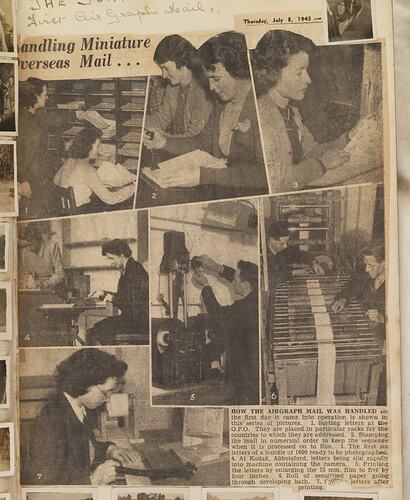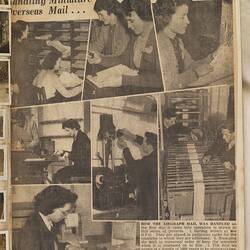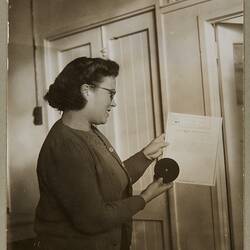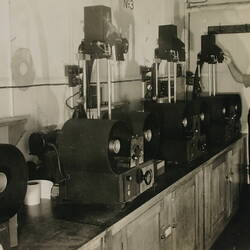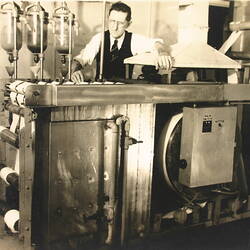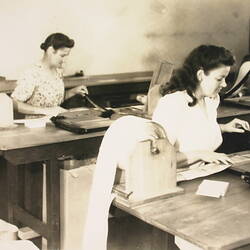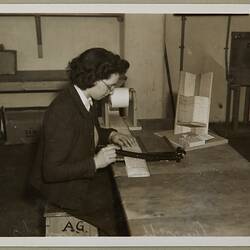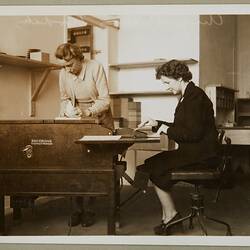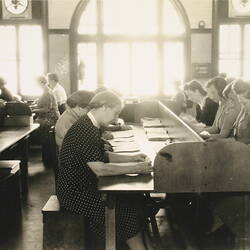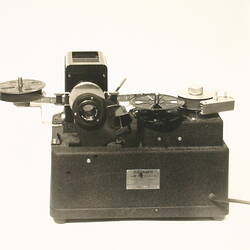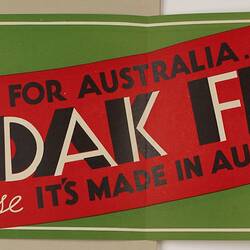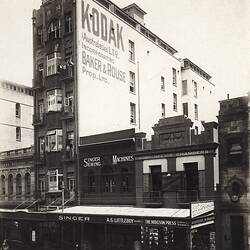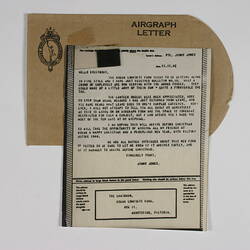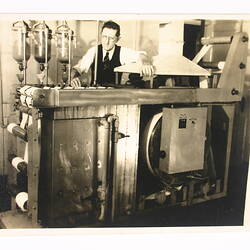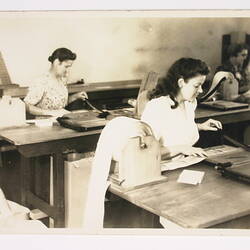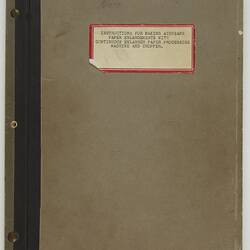The Airgraph Service was launched by the British Post Service, in conjunction with Kodak Limited, in 1941. The new form of communication was designed to solve the problem of sending mail between Britain and the Middle East once Italy joined the Axis powers and air transport became the only option. Equipment was set up in Cairo to allow the letters, written on specially designed stationery, to be shrunk onto microfilm and flown to the UK where they were then enlarged. The light-weight nature of the Airgraph allowed space to be saved on aircraft for other supplies and also reduced the travel time for the letters.
The American equivalent, modelled on the Airgraph, was V-Mail (or 'Victory Mail'). The system was adapted by the United States military, in partnership with Eastman Kodak Company, in 1942. Kodak Australasia Pty Ltd became involved in the process when American personnel stationed in Australia began to receive (and send) mail in this format. Microfilmed letters from the USA were delivered to Kodak where they were enlarged and printed, then distributed to US soldiers stationed in Australia.
The Research Laboratory at the Abbotsford factory site had previously used their 16mm and 35mm Recordak equipment for copying important records of other organisations in Australia. The change to providing V-Mail services meant that United States Military personnel were stationed in the laboratory to check the content of the mail. Former Kodak employee, Pat Hogan, noted that two American servicemen would accompany the mail to the factory and remain whilst it was photographed. Another former Kodak staff member, Noel Swan, worked in the V-Mail section and recalled there were three shifts a day to cater for all of the mail. The V-Mail section eventually moved to the Cine Processing Department before moving from Melbourne to Brisbane once General MacArthur relocated his command post.
Despite the involvement of Kodak Australasia Pty Ltd staff in the V-Mail service, Australian service personnel typically used the airmail letter card for communicating with their loved ones, rather than V-Mail. The only exception was Australian forces serving in Canada who had access to the V-Mail service. This changed in 1943 when Australia joined the British Airgraph Service. Once again, Kodak Australasia Pty Ltd provided the equipment and the staffing to make the service possible, this time for Australian defence force personnel, but the service was also open to the general public to use for overseas communication.
The Airgraph Service formally concluded in Australia after the end of World War II in March 1945. The V-Mail Service followed soon after when Eastman Kodak Company wound up the service in October 1945.
The Kodak Heritage Collection held by Museums Victoria holds a number of objects relating to Kodak's involvement in this aspect of the war effort, including photographs of staff processing letters (MM 96604, MM 96606, MM 96605 and MM 96607). However, it is difficult to tell whether the letters are Airgraph or V-Mail.
References:
"Airgraph Mail" Northern Times (Carnarvon, WA : 1905 - 1954) 9 July 1943: 4. Web. 29 Oct 2018 http://nla.gov.au/nla.news-article75135665
'Christmas Airgraphs', The British Postal Museum; Archive Blog, at https://postalheritage.wordpress.com/tag/airgraph/; accessed: 29.10.2018
HT 43182, Interview - Pat Hogan, Kodak Australasia Pty Ltd, Digital File, Carlton, 11 Sep 2014
HT 43139, Interview - Noel Swan, Kodak Australasia Pty Ltd, Digital File, Melbourne, 1 July 2014
'Introducing V-Mail', Smithsonian National Postal Museum, at: https://postalmuseum.si.edu/victorymail/introducing/microfilm.html accessed: 29.10.2018
Newsletter - 'Australian Kodakery', No 67, Apr 1976, p. 7 (HT 53783)
Newsletter - 'Australian Kodakery', No 76, Mar 1977, p. 7 (HT 35794)
Newsletter - 'Kodak News', No 231, Issue Three, Jul-Aug 1995, p. 3 (HT36107)
'Use of V-Mail to End Oct. 31; Vital Morale Factor in War', Democrat Chronicle, 22nd September 1945, Kodak Historical Collection #003, Department of Rare Books, Special Collections, and Preservation, University of Rochester
'V-Mail Service', Smithsonian National Postal Museum, at: https://postalmuseum.si.edu/collections/object-spotlight/v-mail-service.html accessed: 29.10.2018
'V-Mail', Smithsonian National Postal Museum, at https://postalmuseum.si.edu/exhibits/past/the-art-of-cards-and-letters/mail-call/v-mail.html accessed: 29.10.2018
More Information
-
Keywords
World War II, 1939-1945, Military History, Military Forces, Postal Services & Communications
-
Authors
-
Article types
